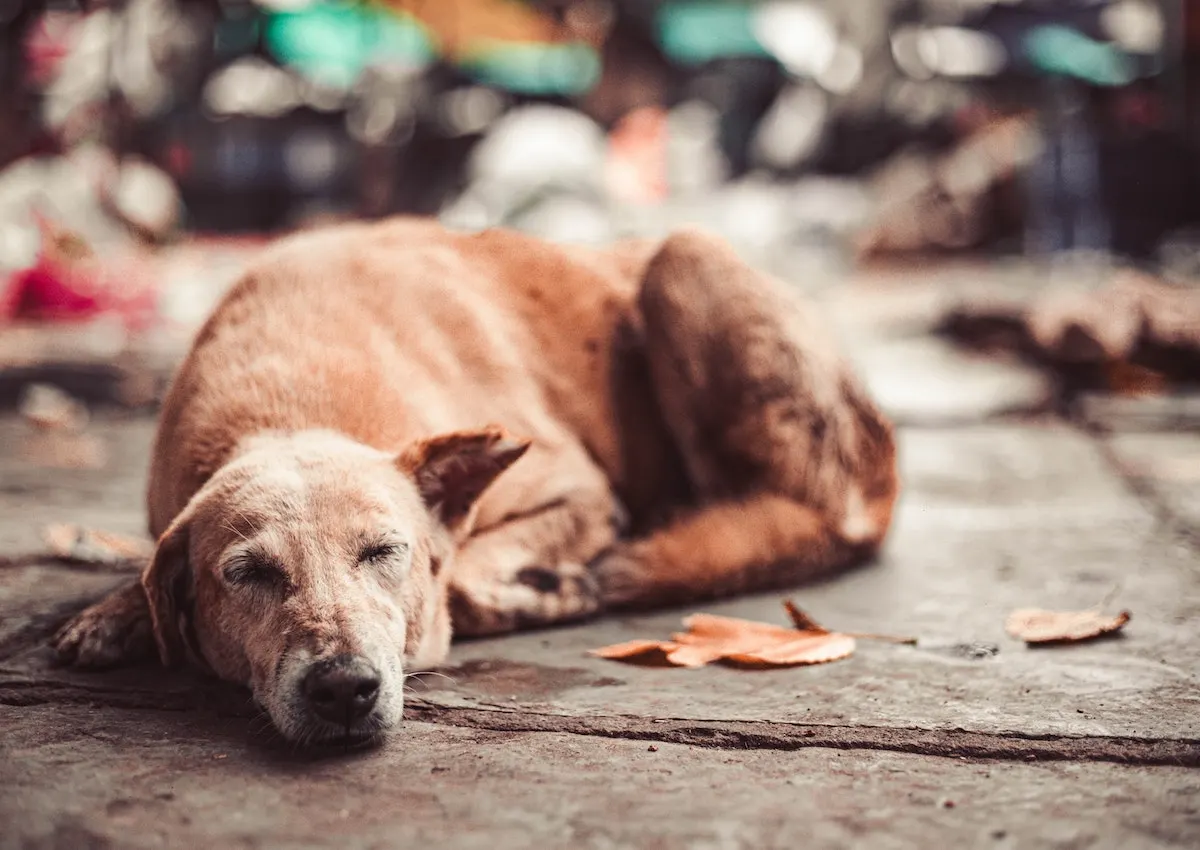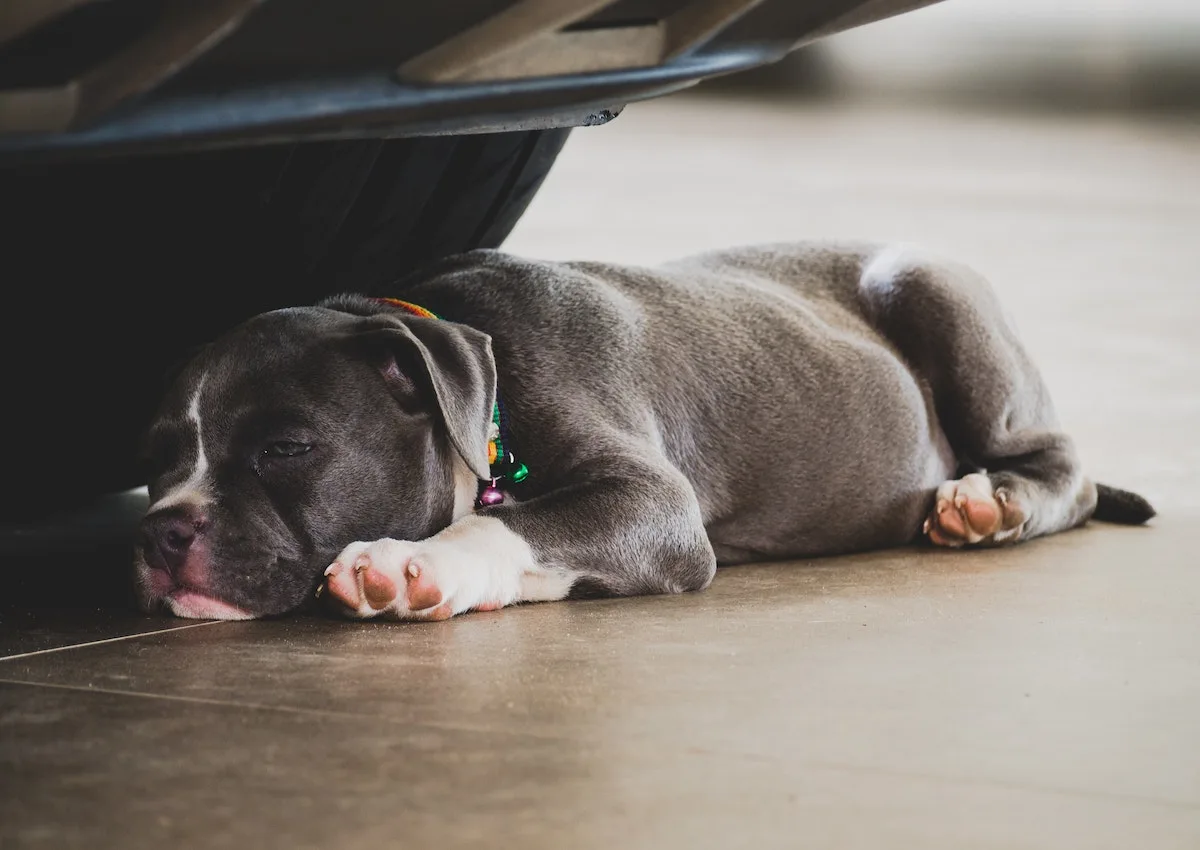Sleep is a natural and essential behavior for all animals, including our furry friends. It’s during sleep that the body can repair itself, memories can be consolidated, and energy levels can be replenished.
However, the way animals sleep can differ greatly from species to species. A commonly asked question is whether dogs can sleep with their eyes open. This intriguing question deserves exploration, delving into the realms of canine behavior, anatomy and sleep patterns. Whether it’s at the foot of the bed or curled up on the floor, witnessing a sleeping dog with an eye open can be an unnerving sight!

Canine sleep patterns
Dogs, like humans, experience different stages of sleep including REM (Rapid Eye Movement) and NREM (Non-Rapid Eye Movement) stages. It’s during REM sleep that dogs, much like humans, experience dreams. Dr. Stanley Coren, a renowned psychologist and a notable author on dog behavior, suggests that the amount of REM sleep a dog experiences depends on the experiences they have during the day.
An article in Psychology Today illustrated this stating “Experiencing negative emotions also affected the dreaming behavior in dogs in the opposite way that it affects dream behavior in human beings. The stressed dogs spent considerably more time in REM sleep than the dogs who had had the positive experiences. This means that they spent more time dreaming. A number of psychologists who study sleep believe that during the dream state individuals tend to “replay” and try to resolve issues concerning events that have occurred during the day.”
Eyelid anatomy and the third eyelid
To comprehend the phenomenon of dogs possibly sleeping with their eyes open, it’s crucial to understand their eyelid anatomy. Dogs have an upper eyelid, a lower eyelid, and a nictitating membrane, also known as the third eyelid. This membrane acts as an additional protective layer, often keeping the eye moist and removing debris.
The third eyelid can give the illusion that a dog is sleeping with its eyes open, especially in certain light conditions or angles. However, in the majority of cases, dogs predominantly sleep with their eyes closed.
The subtle twitching of the eyelids or eyeballs underneath the eyelids may lead to misconceptions about open-eyed sleeping in dogs.

Semi-alert State: Partial Sleep
Dogs are descendants of wolves and have retained some of their ancestors’ characteristics, including sleeping habits. Wild wolves have to be semi-alert even during sleep to protect themselves from predators or to hunt for prey.
Some experts such as Kim Kortekaas and Kurt Kotrschal, propose that this semi-alert state is instinctual behavior that has been passed down to domestic dogs.
Studies on dog behavior exhibit how some dogs may enter a phase of partial sleep, where one part of the brain remains somewhat alert while the other part is in a sleep state. This state may give the appearance that the dog is sleeping with its eyes partially open, however, they are not in deep sleep during such instances.
Deep sleep and closed eyes
In a true deep sleep state, both REM and NREM, dogs predominantly keep their eyes completely closed.
When dogs are in deep sleep, their brain activity is quite similar to humans, and their eyes remain closed to protect them from potential irritants and to maintain the moisture levels of the eyes. It’s in this stage that dogs are rejuvenated and revitalized. As stated above the third eyelid can give the illusion that a dog is sleeping with its eyes open, especially in certain light conditions or angles.
Observational studies and owner reports
Many pet owners and veterinarians have noted occurrences where it appears that dogs are sleeping with their eyes open. However, more often than not, these instances involve dogs in a semi-alert or partial sleep state.
Dogs have an astonishing capability to adapt their sleep patterns according to their environment. In stressful or unfamiliar environments, dogs may showcase variations in sleep postures and eyelid positions, contributing to the notion that they sleep with their eyes open.
This is one of many unique behaviors of canines just like when they cover their nose with their paw.

Health implications
Although it is rare, a dog consistently sleeping with its eyes open or partially open may be indicative of underlying health issues, such as neurological disorders or eye conditions.
Some dog breeds are prone to prolapse of a gland found in the dog’s third eyelid—a condition known as “cherry eye” mostly because of its bright-red presence resembling a cherry in the corner of the dog’s eye sometimes causing minor discomfort, conjunctivitis and ocular discharge.
Horner’s syndrome in dogs is a neurological disorder that can cause dysfunction of the sympathetic nerves to the eye, leading to symptoms such as drooping eyelids, constricted pupils and protrusion of the third eyelid, typically affecting one side of the face.
Veterinarians recommend that any deviations in sleep patterns or behaviors should be closely monitored, and professional advice should be sought to rule out any potential health concerns.
If your dog’s eye is red, swollen, itchy or discharging, it’s best to seek out a vet’s advice.
Conclusion
The mystery surrounding dogs sleeping with their eyes open can be attributed to their unique eyelid anatomy, inherited semi-alert states and instances of partial sleep.
Research and studies predominantly illustrate that dogs, in a genuine state of deep sleep, keep their eyes firmly closed. Observational studies and anecdotal evidence have played pivotal roles in deciphering the peculiar sleep patterns and habits of dogs, shedding light on their adaptive and evolutionary traits.
The third eyelid and the semi-alert state inherited from their wild ancestors can give the illusion of dogs sleeping with open eyes, but it’s crucial to differentiate between partial sleep and deep sleep.
Be observant of your pet’s sleep patterns and consult a veterinarian if any abnormalities or consistent deviations are noticed.


Lisaq
Wednesday 27th of September 2023
You gave me all the information I was looking for and more. My dog often sleeps with his eyes open and I wasn't sure if it was real sleep or not.
Carleen
Wednesday 27th of September 2023
This is fascinating. One of my dogs is often "sleeping" with his eyes open, but does seem semi-alert. Now I know that he is not totally asleep with his eyes open! I had another one though who did not seem at all alert when she did so, and I would often rouse her to make sure she was still alive! I'm a helicopter dog Mom, lol!